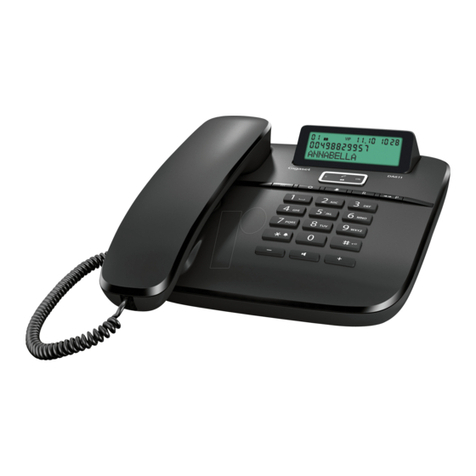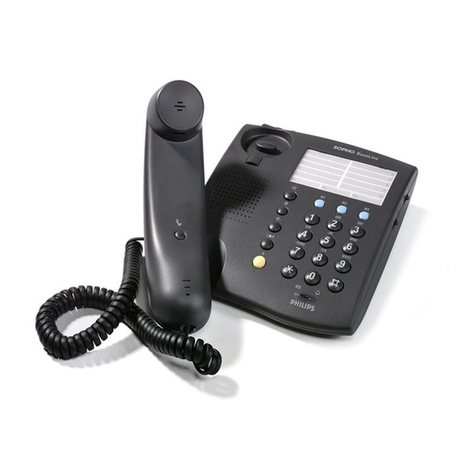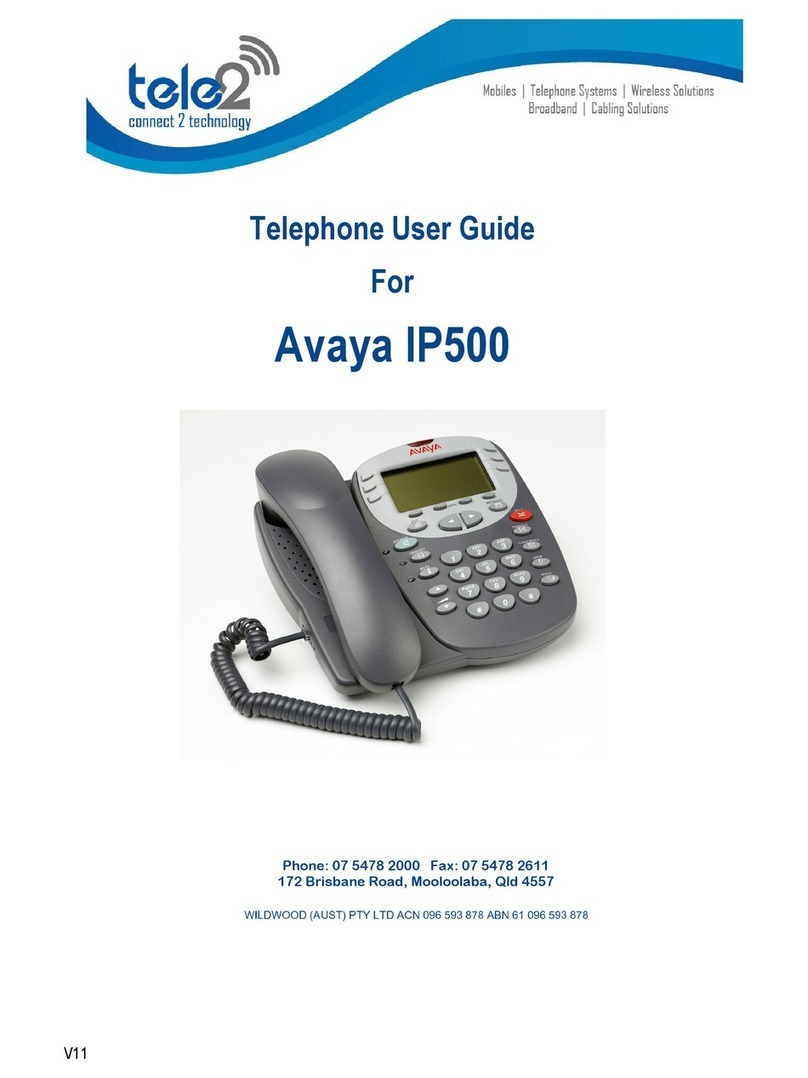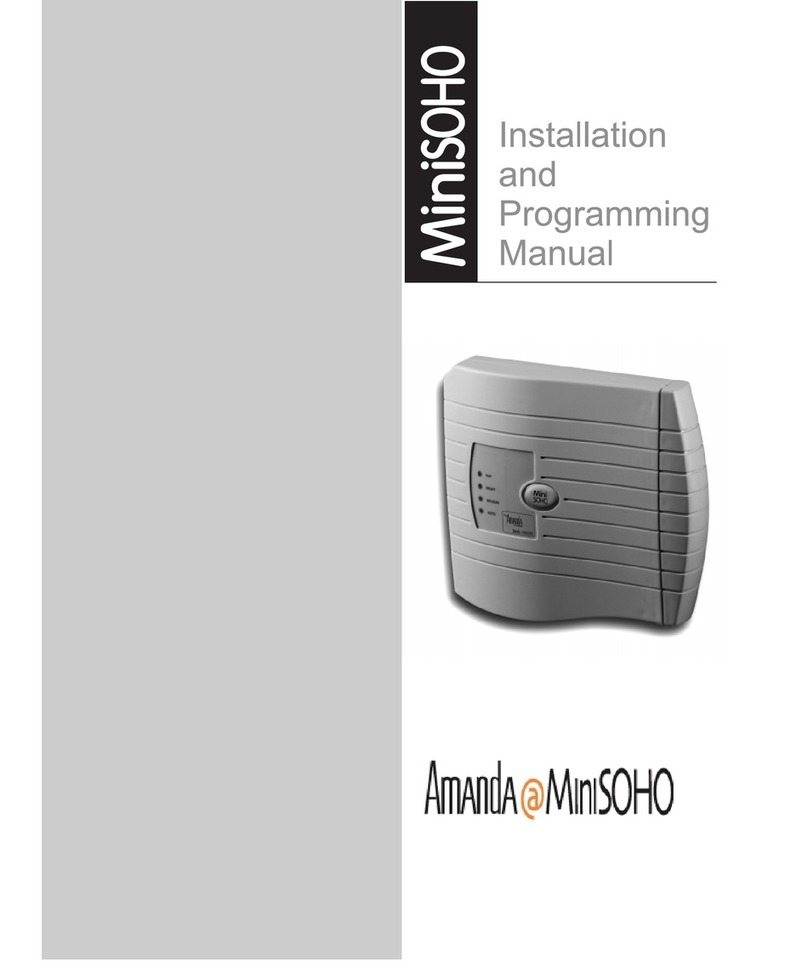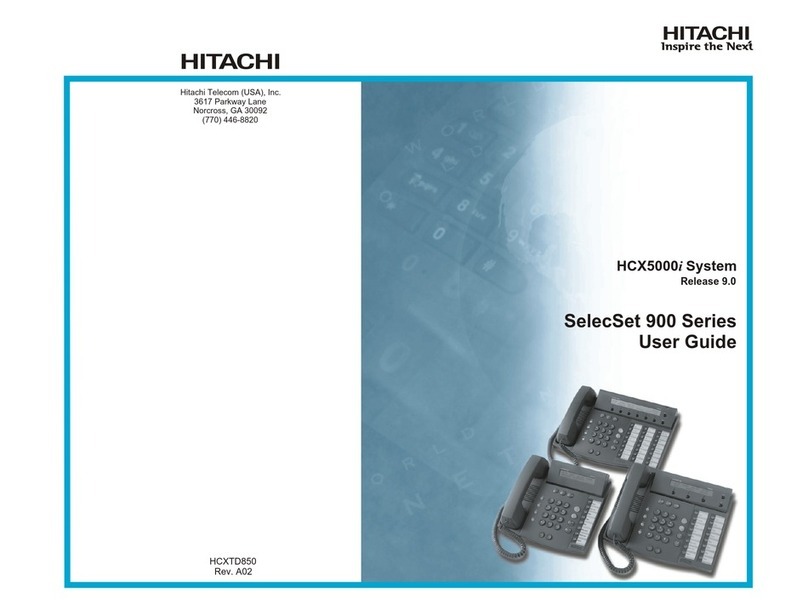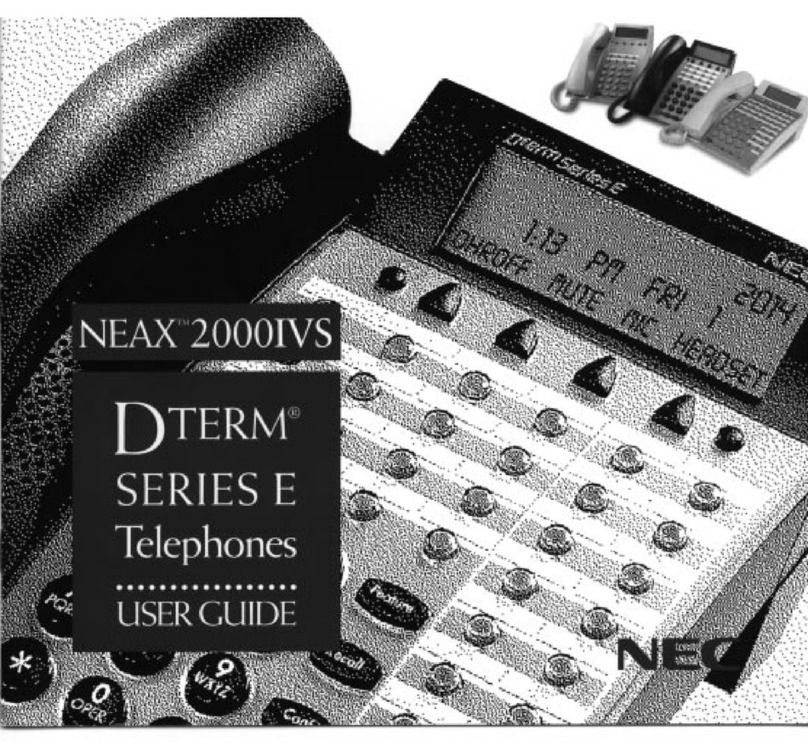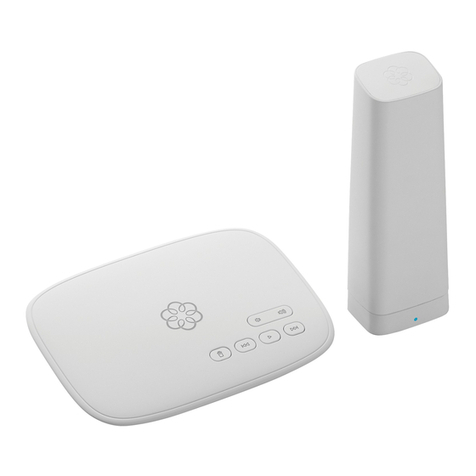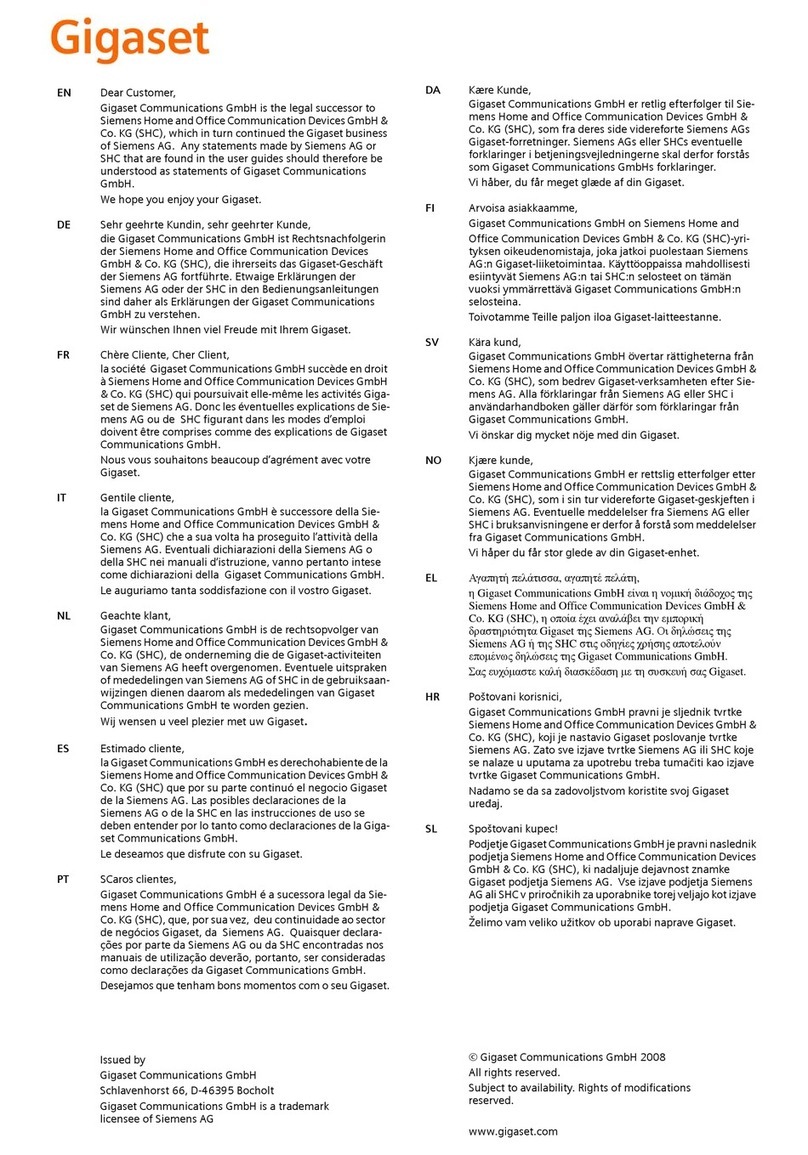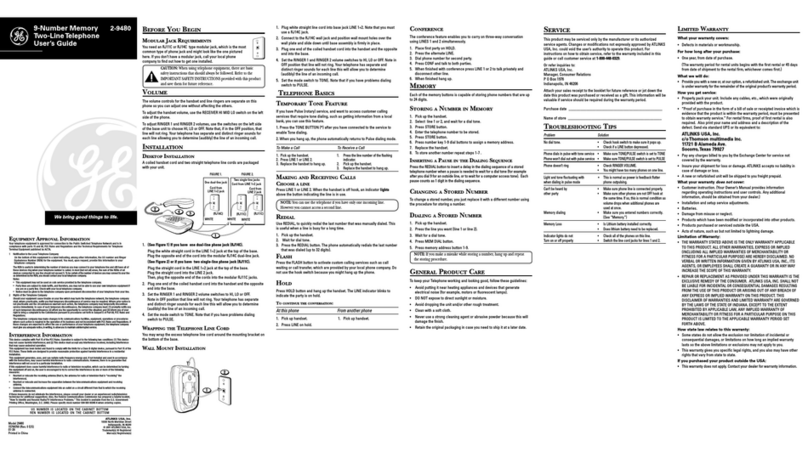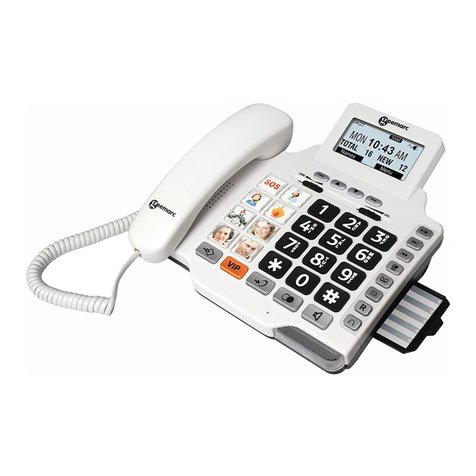Gigaset A18H User manual

1
Gigaset A18H / CHN / A31008-M2071-Y101-5-7619 / overview_CHN.fm / 19.10.2011
Gigaset A18H
The handset at a glance
Display icons
1 Display in idle mode
2Back key
When editing text: backspace
In menu: go back to previous level
3Internal communication key (¢page 10)
4Talk key / Redial list* (¢page 8)
5Control key
In idle mode: sopen phone book, topen calls list.
In menu, phone book and lists: Scrolling up/down
6Star key / Ringer on/off *
7Recall key, Consultation call (flash) / Insert pause*
8OK key
9Menu key (¢page 6)
10 End call key/Power on/off *
11 Hash (#) key/Keypad lock on/off * (¢page 5)
12 IP dialling key * (¢page 7)
13 Mute key (microphone off) (¢page 7)
* To activate a function marked with an asterisk (*) press
and hold the corresponding key.
Display in idle mode
¤Press and hold the Akey to toggle between name/
number and date/time display.
ÒU
Gigaset 1
1
3
5
10
4
9
28
6
7
11
12
13
ÒRadio signal
Steady: Handset is linked with base
Flashing: Handset is out of range or not
registered
UBattery
Steady: Full, more than1 hour talking
time
Flashing: Charging
=Steady: Less than 1 hour talking time
Flashing: Almost flat
ªTalk
Steady: Ongoing call
Flashing: Incoming call received
YCalls list
Steady: Already inspected calls in
calls list
Flashing: New calls in calls list
Off: No entry in calls list
{In editing mode: Backspace. Press Ato
delete one character at a time
In menu: Press Ato go back to previ-
ous level or exit menu.
|Confirm menu function or save entry with
B.
V
W
In menu and lists: Scroll up/down withp.
In talk mode: Adjust volume with p.
¶Phone book is opened
¼Alarm clock is activated
ÚRinger is deactivated
ØKeypad lock is activated

2
Gigaset A18H / CHN / A31008-M2071-Y101-5-7619 / starting.fm / 19.10.2011
Safety precautions Care
Wipe down the base station and handset with a
damp cloth (no solvents) or an antistatic cloth. Never
use a dry cloth. This can cause static.
Contact with liquid
If the handset should come into contact with liquid:
◆Switch the handset off and remove the batteries
immediately.
◆Allow the liquid to drain from the handset.
◆Pat all parts dry, then with the battery compart-
ment open and the keypad facing down place the
handset in a dry, warm place for at least 72 hours
(not in a microwave, oven etc.).
◆Do not switch on the handset again until it is
completely dry.
When it has fully dried out, you will normally be able
to use it again.
Read this user guide and the safety precautions care-
fully before use. Explain their contents and the
potential hazards associated with using the tele-
phone to your children.
Only use the mains unit supplied.
Fit only the recommended, rechargeable
batteries (¢page 14), i.e. never use a
conventional (non-rechargeable) battery
or other battery types as this could result
in significant health risks and personal
injury.
The operation of medical appliances may
be affected. Be aware of the technical
conditions in your particular environ-
ment, e.g. doctor's surgery.
Do not hold the rear of the handset to
your ear when it is ringing. Otherwise you
risk serious and permanent damage to
your hearing.
The handset may cause an unpleasant
humming noise in hearing aids.
Do not install the phone in a bathroom or
shower room. The handset is not splash-
proof.
Do not use your phone in environments
with a potential explosion hazard, e.g.
paint shops.
If you give your Gigaset to someone else,
make sure you also give them the user
guide.
Please remove faulty base stations from
use or have them repaired by our service,
as they could interfere with other wireless
services.
Disposal
All electrical and electronic products
should be disposed of separately from the
municipal waste stream via designated
collection facilities appointed by the gov-
ernment or the local authorities.
The correct disposal and separate collection of your
old appliance will help prevent potential negative
consequences for the environment and human
health. It is a precondition for reuse and recycling of
used electrical and electronic equipment. For more
detailed information about disposal of your old appli-
ance, please contact your local council refuse centre
or the original supplier of the product.
$
ƒ
!

3
Gigaset A18H / CHN / A31008-M2071-Y101-5-7619 / starting.fm / 19.10.2011
First steps
Seting up the charging cradle
The charging cradle is designed for use in enclosed
dry rooms with a temperature range of +5 °C to
+45 °C.
The phone's feet do not usually leave any marks on
surfaces. However, due to the multitude of different
varnishes and polishes used on today's furnishings,
the occurrence of marks on the surfaces cannot be
completely ruled out.
Please note:
◆Never expose the telephone to heat sources,
direct sunlight or other electrical appliances.
◆Protect your Gigaset from moisture, dust, corro-
sive liquids and vapours.
Connecting the charging cradle
¤Plug the mains adapter into the plug socket.
Setting up the handset for use
¤Remove the protective film!
Inserting the batteries and closing the battery
cover
Inserting the batteries
Placing the handset in the charging cradle
and charging the batteries
Before you can use the handset, you must first charge
the batteries.
¤Place the handset with the display facing up
in the charging cradle.
The display is protected by a
plastic film.
Warning
Use only the rechargeable batteries recom-
mended by Gigaset Communications GmbH
(¢page 25). Never use a conventional (non-
rechargeable) battery or other battery types as
this could result in significant health risks and per-
sonal injury. For example, the batteries could
explode. The phone could also malfunction or be
damaged as a result of using batteriesthat are not
of the recommended type.
Opening the battery cover
If you need to open the battery
cover, for instance to replace the
batteries:
¤Press the ribbing at the top of
the battery cover
and slide it
downward.
¤Insert the batter-
ies the right way
round.
The polarity is indicated in/on
the battery compartment.
Closing the battery cover
¤Slide the battery cover from
bottom up onto
the casing until
it clicks into
place.

4
Gigaset A18H / CHN / A31008-M2071-Y101-5-7619 / starting.fm / 19.10.2011
The idle screen is displayed. The
handset name and the internal
handset number are shown. The
handset is already registered to
the base.
If you want to register further
handsets, you have to register
each individual handset manually (¢page 10).
Handsets are assigned the lowest available internal
number (1-4). If four handsets are registered you will
have to deregister one handset before you can regis-
ter another.
Initial charging and discharging of the
batteries
If the handset is activated, the flashing battery icon in
the top right of the display indicates that the batteries
are being charged. During handset operation, the
battery icon indicates the charge status of the batter-
ies.
The correct charging level can only be displayed if the
batteries are first fully charged and discharged.
¤Place the handset in the charging cradle for at
least twenty hours.
¤Then remove the handset from the charging cra-
dle and do not replace it until the batteries are
completely discharged.
Activating/deactivating the handset
¤Press and hold the akey to activate or deacti-
vate the handset.
If you place a deactivated handset in the base station
or charging cradle, it will automatically activate.
Handset out of range
If the handset is out of range of the base station the
antenna icon Òwill flash on the display. If the signal
becomes poor during a call the earpiece will briefly
intermit voice transmission by emitting an out of
range warning tone. In this case you should reduce
the distance to the base station. If the signal becomes
too low the line is disconnected.
Setting the date and time
Set the date and time on the base station so that the
correct date and time can be assigned to incoming
calls and the alarm can be used. The date and time is
synchronised with all registered handsets.
Your phone is now ready for use
If you have any questions about using your phone,
please read the tips on troubleshooting ("Writing and
editing text" ¢page 13) or contact our Customer
Care team ¢page 14.
Using the phone
Control key
Entering numbers and text
¤Enter digits or letters using the keypad ~.
You will find information on multiple line input in the
appendix to this user guide, ¢page 13.
When entering the time and date etc.:
¤Overwrite the highlighted (flashing) character.
Correcting incorrect entries
In editing mode the display shows {in the lower
left corner.
To correct incorrect characters when editing:
¤Press the {key Ato delete the character to
the left of the cursor.
¤Insert new characters at the cursor position.
USteady: Full, more than1 hour talking time
Flashing: Charging
=Steady: Less than 1 hour talking time
Flashing: Almost flat. Put the handset into the
charging cradle to recharge.
Please note
◆After the first battery charge and discharge
cycle you may replace your handset in the
charging cradle after every call.
◆Always repeat the charging and discharging
procedure if you have removed the batteries
from the handset and re-insert them.
◆The batteries may warm up during charging.
This is not dangerous.
◆In a while, the charge capacity of the batteries
will decrease for technical reasons.
Ò=
Gigaset 1
In idle mode
tOpen the calls list.
sOpen the phone book.
In menu and lists
pScroll up/down line by line.
In input fields
tMove to previous character.
sMove to next character.
During a call
pAdjust the earpiece volume.

5
Gigaset A18H / CHN / A31008-M2071-Y101-5-7619 / starting.fm / 19.10.2011
Scrolling to display long numbers
The display indicates a phone numberwhich is longer
than 12 digits by displaying Âand Ãleft and right to
the number. To display the additional digits:
¤On the handset press B.
Activating/deactivating the keypad
lock
¤Press and hold #to activate the keypad lock.
The Øicon appears in the display when the key-
pad lock is activated.
¤Press and hold #again to reactivate the keypad.
The keypad lock is deactivated automatically if some-
one calls you or if paging is activated. It is reactivated
when the call is finished.
Activating/deactivating handset
Precondition: handset is in idle mode.
¤Press and hold afor at least 5 seconds to power
off the handset.
¤Press and hold aagain to reactivate the hand-
set.
Reverting handset to idle mode
To revert the handset to idle mode during menu
operation or in lists:
¤Pressa.
Changes that you have not confirmed or saved will be
lost.
If no key is pressed for more than 60 seconds the
handset will automatically return to idle mode.
Activating/deactivating ringer tone
To switch the ringer off:
¤Press and hold * to turn off the ringer tone.
The Úicon appears in the display when the
ringer is deactivated.
¤Press and hold * once again to reactivate the
ringer.
You can adjust the ringer volume for the handset
(¢page 11).
Using the menu
Your phone has an extensive range of features. These
are offered in the form of menus. The menu tree is
available via the handset.
Precondition: handset is in idle mode.
¤To open the menu, press the fkey.
¤Use the pkey to scroll to the function you require
During menu operation the display shows {on the
lower left corner and |on the right corner indicat-
ing that the corresponding keys are activated.
|: Press Bto confirm your selection.
{: Press Ato go back to the previous level or to
exit the menu.
¤To return to idle mode: press the akey.
Table of contents
Other Gigaset Telephone manuals
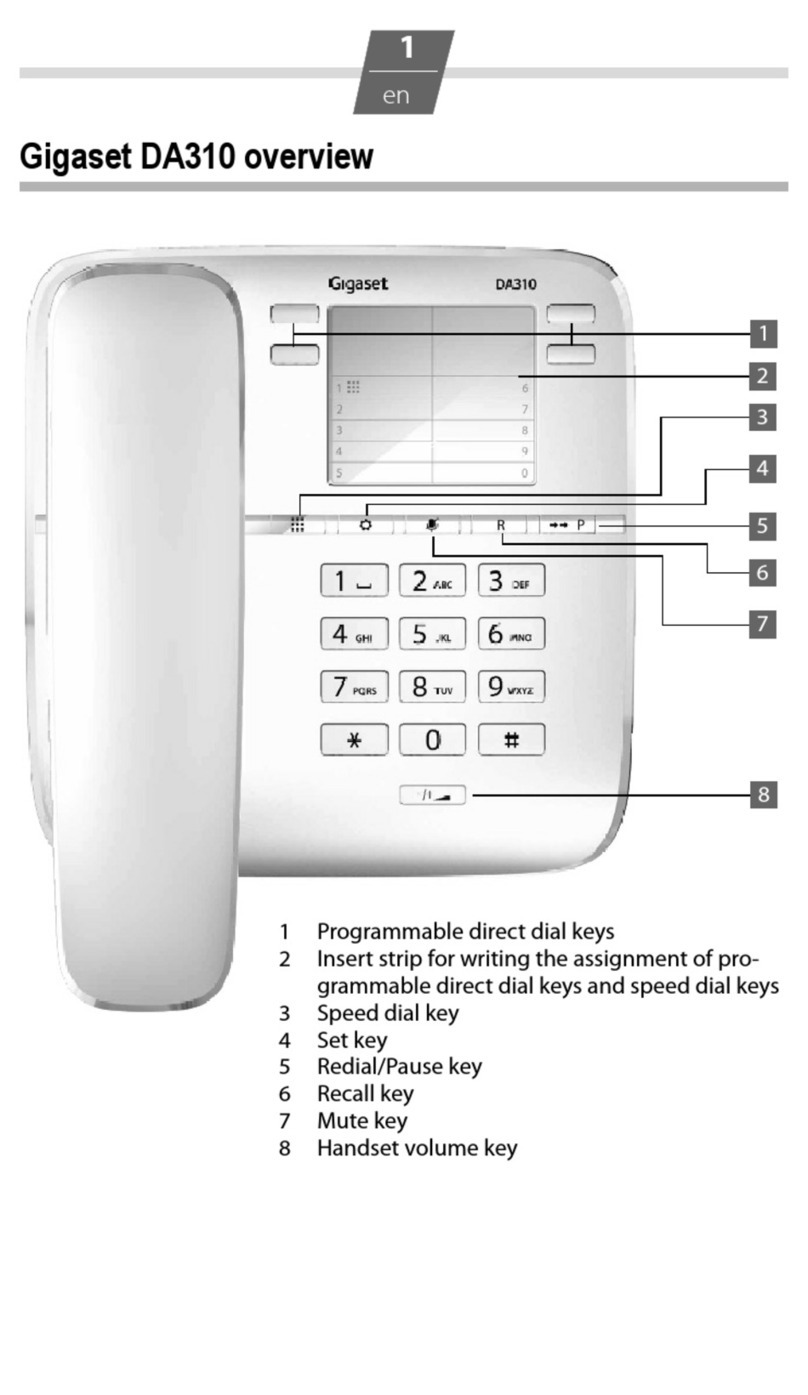
Gigaset
Gigaset DA310 Installation guide
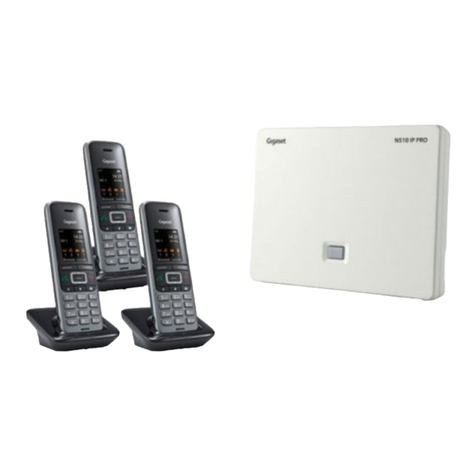
Gigaset
Gigaset N510 User manual

Gigaset
Gigaset T640 PRO User manual

Gigaset
Gigaset E550 User manual
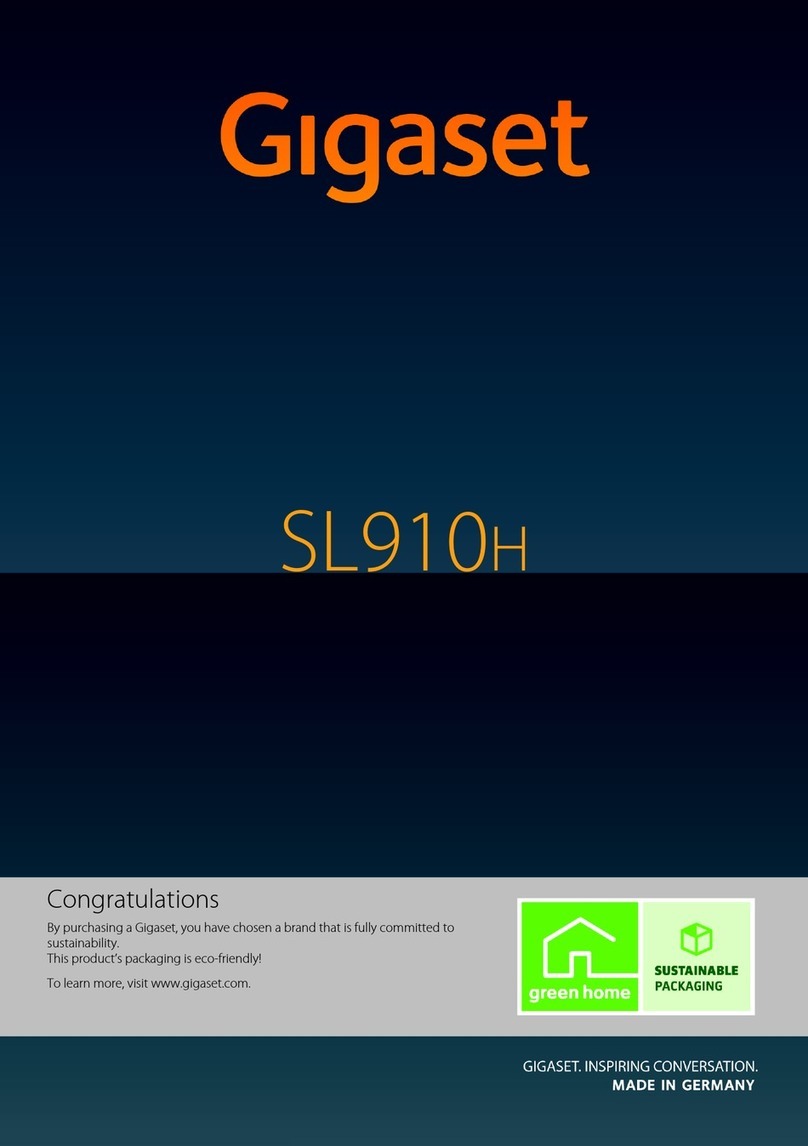
Gigaset
Gigaset SL910h User manual
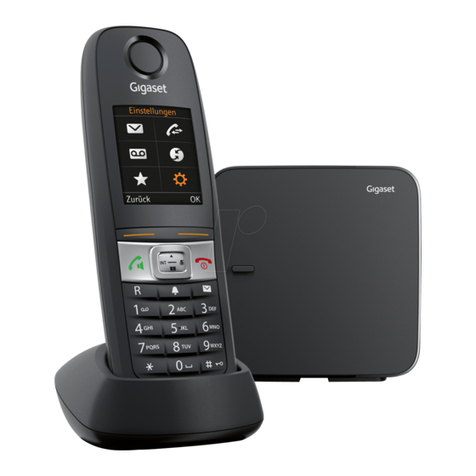
Gigaset
Gigaset E630 User manual
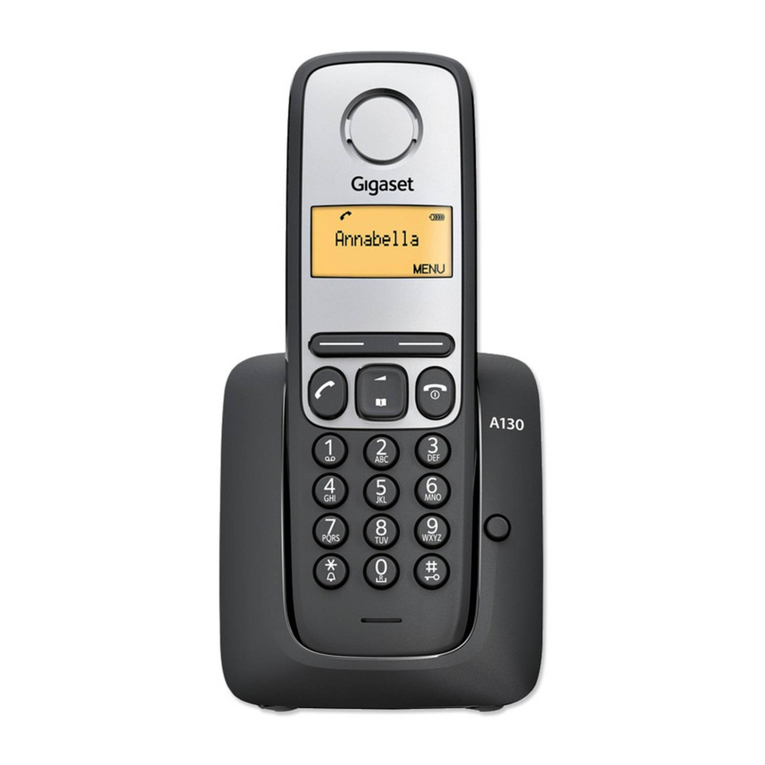
Gigaset
Gigaset A130 User manual

Gigaset
Gigaset Gigaset 5020 User manual
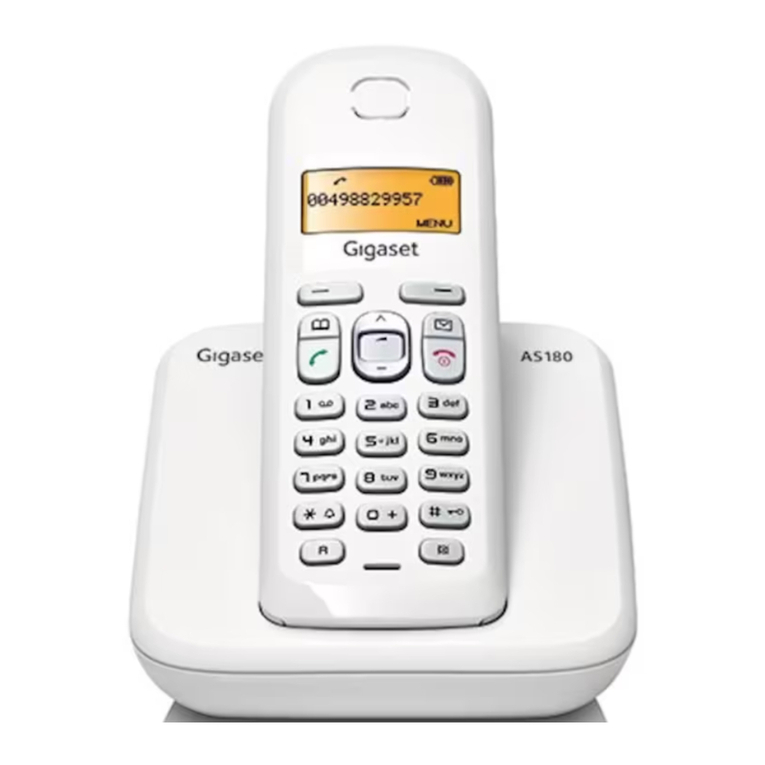
Gigaset
Gigaset AS180 User manual

Gigaset
Gigaset 120 GE User manual
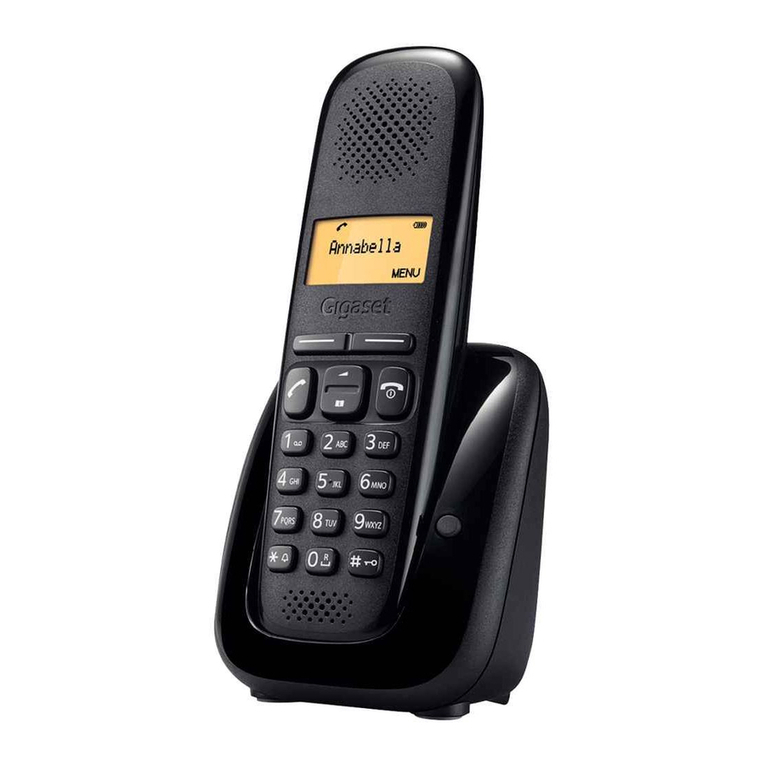
Gigaset
Gigaset A150 User manual

Gigaset
Gigaset A730 User manual

Gigaset
Gigaset N510 IP PRO User manual

Gigaset
Gigaset Gigaset DA410 User manual

Gigaset
Gigaset Gigaset DA510 User manual

Gigaset
Gigaset E290M Duo User manual
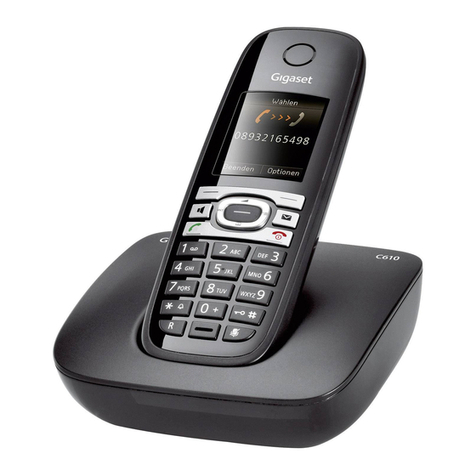
Gigaset
Gigaset C610 User manual

Gigaset
Gigaset 5005 Series User manual

Gigaset
Gigaset Gigaset 5010 User manual

Gigaset
Gigaset DA310 User manual
